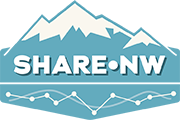This training topic corresponds to data on this website. Trainings listed here are publicly available and evaluated for quality by the SHARE-NW team. Using the data and these trainings and webinars, you can make data-driven decisions to improve the health and well-being of the communities you serve.
All trainings and webinars featured on the SHARE-NW website are free.
